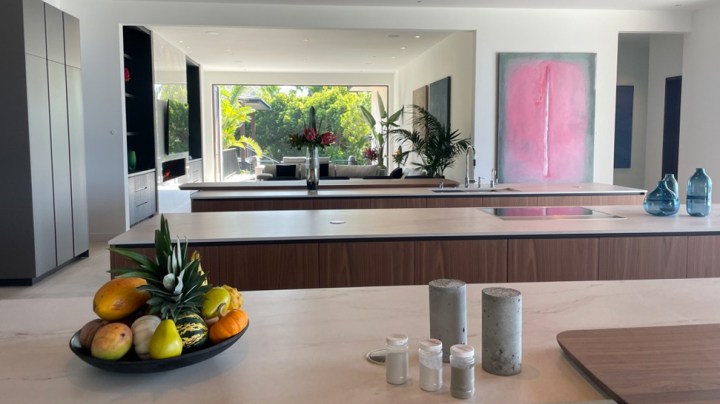
Zero-carbon homes exist. Can you really live in one?

More than a third of the United States’ greenhouse gas emissions come from buildings. That’s why the Inflation Reduction Act earmarks money for homeowners to replace gas appliances, install solar panels and replace old windows with more efficient ones.
But some developers have taken the idea of low-carbon retrofits a step further and created net-zero-carbon homes.
Let’s look at a luxury home in that category.
This 16,000-square-foot mansion in elite Malibu, California, has floor-to-ceiling windows, an ocean view, drought-tolerant gardens and an infinity pool. It could be yours for just under $29 million.
The developer, Scott Morris, is especially proud of the climate-friendly concrete used for the foundation.
“A lot of the low-hanging fruit items, such as the concrete, is cost-neutral, and it’s stronger and better than conventional concrete,” Morris said.
The ceiling and decks are made from sustainably sourced recycled or reclaimed wood. The fireplace is special too. The “flames” are a convincing display of LED lights and water vapor.
The home itself is net zero. But it’s next to impossible to build anything that releases no greenhouse gas, so some parts of the house, like wood in the ceiling and decks, store carbon — canceling out the emissions. Combined, it should equal zero.
It’s innovative, but wouldn’t fit into the budget for most people. In a quiet, middle-class neighborhood 40 minutes up the coast in Ventura, there’s a much humbler, 2,000-square-foot home that’s just as eco-friendly.
“We wanted it to look as normal as it could to essentially appeal to anybody that would want to live in a neighborhood like this,” said the design architect, Dylan Johnson.
On the hallway wall was a tiny peek-a-boo door called a “truth window.” Behind it was a small glass pane. Inside the wall there was no wood, no metal studs, no cotton candy-looking insulation. Just rice straw from the Sacramento Valley.

Straw bale houses are eco-friendly because the straw stores carbon, and it makes great insulation, so the energy bills are cheaper. Johnson wouldn’t say exactly how much it cost to construct, but he said it’s roughly the same price as a standard home of the same size.
The idea for the house came from its owner, Yvon Chouinard. He’s most famous for founding Patagonia, the clothing company that says it’s on a mission to save the planet. That includes cutting down fewer trees.
Chouinard said one of the biggest problems in construction is the inertia that prevents us from changing what we’ve been doing for so long.
“So I thought, well, we had this lot up here, let’s build one out of straw bale and prove what a good house it is. And maybe we can encourage other people to do the same and stop cutting trees,” he said.
Johnson, the home’s architect, said there’s often less engineering in a straw bale house.
“We kinda need to open our eyes to simple, low-tech, already-existing things you can do. If anything, this home is lower-tech in many ways, the construction of it, than a new stick-framed home.”
There’s a lot happening in the world. Through it all, Marketplace is here for you.
You rely on Marketplace to break down the world’s events and tell you how it affects you in a fact-based, approachable way. We rely on your financial support to keep making that possible.
Your donation today powers the independent journalism that you rely on. For just $5/month, you can help sustain Marketplace so we can keep reporting on the things that matter to you.

















